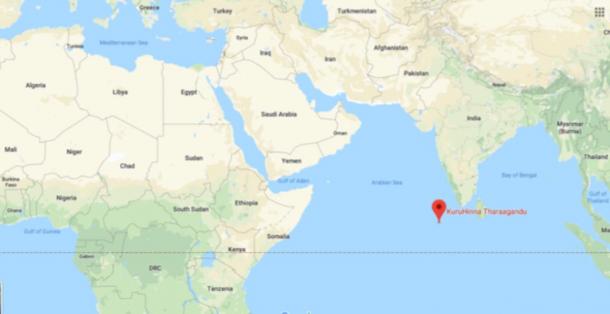
Kuruhinna Tharaagandu, Maldives’ Forgotten Buddhist Past
The Maldives is a tropical paradise that attracts visitors from all over the world. There is, however, more to the beautiful island nation than pristine beaches and an abundance of sunshine. It has a long history and many important historic sites. Kuruhinna Tharaagandu, a Buddhist site on the main island, is one of the most important reminders of the nation’s Buddhist past.
The History of Kuruhinna Tharaagandu
The archipelago of islands was first populated in around 1500 BC by migrants from India. Little is known about the islands’ past or culture as no written records remain, but it appears that it was a matriarchal society and was ruled by queens.
According to legend, at some time in the 3 rd century BC, possibly during the reign of Ashoka the Great, Aryans from India settled in the Maldives and established a kingdom. They became patrons of Buddhism and Theravada Buddhism was the dominant branch of the religion on the islands. The archaeological remains also indicate close links between local Buddhists and Sri Lanka.

Location of Kuruhinna Tharaagandu, Maldives (Google Maps)
Kuruhinna Tharaagandu was a Buddhist monastery and a pilgrimage site patronized by the local king and the aristocracy. The monastery flourished during the 7 th and 8 th centuries AD.
The Maldives was visited by Muslim sailors and missionaries and over time, Islam spread through the inhabitants. The king made Islam the state religion, which led to the decline of Buddhism on the island. Without the patronage of the king, the monastery was unable to continue, and the monks may even have been subject to periods of persecution. Eventually, as the entire population converted to Islam, the site was abandoned and lay forgotten.
The Buddhist Monastery at Kuruhinna Tharaagandu, Maldives
The site had been neglected for many years and was largely overgrown until 1996 when it was excavated and many of the remains were restored. Archaeologists revealed that the monastery was half a mile (1 kilometer) long. Some 64 circular and semi-circular stone structures were discovered, the majority consisting of only their lower parts. All were constructed from coral taken from the sea.
- Paying With Shells: Cowrie Shell Money Is One of the Oldest Currencies Still Collected Today
- The Sacred Bavikonda Monastery: Vestiges of the Buddhist Golden Age in India
- Uncovering the Truth Behind Matriarchal Societies in the Ancient World

A water hole in a dwelling of the Kuruhinna Tharaagandu ruins (CRC43 / CC BY-SA 3.0)
The many stupa remains at the archaeological site were likely places of burial for leading Buddhists. There are also traces of decorated stone, but they have faded badly. Foundations of dwellings, most likely residences of the monks, contain waterholes, and a treasure trove of cowrie shells were found close to a flight of stairs. They were important in Buddhist rituals and used as a currency in the early Middle Ages.
As the structures were made of coral they have been severely eroded by the annual monsoons, but one of the largest remaining structures is the chaitya, a shrine or a prayer hall found in Indian religions.
Cowrie shells used as money in ancient times (sytilin / Adobe Stock)
In 2008 the American government donated a sum of money to preserve the historic remains although there seems little urgency among many in the government to commence the project. This may be due to fears that it will be attacked by Islamic fundamentalists as extremists have attacked Buddhist artifacts in the national museum in recent years.
The Journey to Kuruhinna Tharaagandu, Maldives
The Buddhist site is two hours from the capital of Malé, on the island of Kaashidhoo in Maldives. It is located not far from a small village near a plantation. As the journey to the area is long, hiring a local guide is advised. Alternatively, there are a number of excellent hotels near the archaeological site. No entry fee is charged at the site and no information boards are erected at the location about its history, but the local guides, if hired, are knowledgeable.
Top image: Foundations of Kuruhinna Tharaagandu uncovered in 1996 Source: CRC43 CC BY-SA 3.0
By Ed Whelan
References
Litster, M. (2019). Maldivian Archaeology
Maniku, H. A. (1986). Conversion of Maldives to Islam. Journal of the Royal Asiatic Society Sri Lanka Branch, 31, 72-81
Available at: https://www.jstor.org/stable/23731038
Mohamed, N. (2005). Note on the Early History of the Maldives. Archipel, 70(1), 7-14
Available at: https://www.persee.fr/doc/arch_0044-8613_2005_num_70_1_3970
















Comments
The government is in fear in contributing to restoring it for fear of Muslims destroying it. When are the Muslims (not talking about all Muslims, but the ones who want to destroy and kill) gonna get it. Islam is supposed to mean Peace.
Mary Madeline